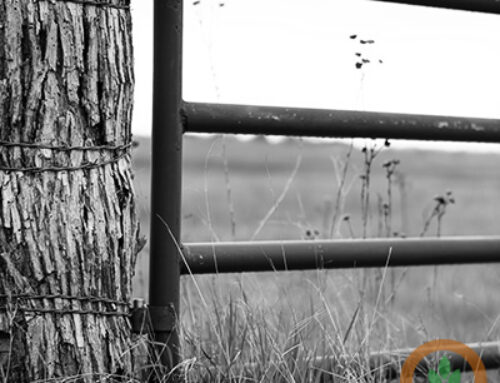Farm operations benefitting from the sandy soils and microclimates of west-central Michigan will soon have their own dedicated tree fruit research station, thanks to the vision of a growers’ group.
The station would be located on 40 acres just north of the Michigan Asparagus Research Farm in Oceana County, where there’s an opportunity for some cooperation, efficiency and sharing between the fruit and vegetable sides of research. The group would also serve growers in Mason and Newaygo counties.
Newly-formed West Central Michigan Horticultural Research Inc. is moving fast. The group’s president, Andy Riley, a grower at Riley Orchards in Mears, said the group is having facility plans drawn up and they plan to break ground by spring, and also have a farm manager hired by that time.
“It’s a real milestone for our community,” Riley said. “We haven’t had a real station here, and if you look at the numbers of pounds of fruit that come out of this area, it’s substantial.” Oceana County had nearly $27 million of estimated fruit and tree nut sales in 2017, according to the USDA ag census – Mason County had $7.65 million and Newaygo had about $9.5 million.
Although there’s regional grower interest in the project, Riley credited Shelby, Michigan’s Peterson Farms as being instrumental in getting the project rolling. Although growers have already raised a substantial amount toward establishing the facility, fundraising efforts are ongoing – growers who donate $1,000 or more can get their names on a plaque in the entryway. Riley said the group is talking to Michigan State University (MSU) and commodity groups about the project, while pursuing government grant dollars to help with funding.
The new tree fruit research station would be in good company. Other MSU tree fruit research facilities in the state include Clarksville Research Center, Northwest Michigan Horticulture Research Center, Southwest Michigan Research and Extension Center and Trevor Nichols Research Center.
“Our goal is not to take away from other research stations, (but) to partner with them, be colleagues with them,” Riley said. “We’re all stronger as an industry. You’re stronger when you work together with people.”
In 2017, west-central growers sought out and received from MSU, a dedicated Extension educator.
“We were out of a tree fruit educator for quite a few years,” Riley. “Finding David Jones – he’s a diamond. He’s an asset to our community. We want to encourage him in his work.”
Growers believe growing conditions in west-central Michigan are much different than those around the existing tree fruit research stations, Riley said.
“We have a lot more sand up here, which is why we can grow asparagus so well,” Riley said. “When we plant an apple tree up here, the rootstock has to be a lot stronger.” Other apple-growing regions in Michigan, such as the Fruit Ridge area in Sparta, have heavier soils. He said the west-central sandier soils have been found effective for avoiding bitter pit in Honeycrisp. The soils on the 40-acre new facility can support apples, cherries and plums, although it’s currently planted with pears, cherries, peaches and corn. The climate is also different than some of the other regions – with Oceana and Mason counties, on the Lake Michigan coast.
Jones referred to the sandy-soiled country as “ancient sand dunes.” The soil drains well, but growers who don’t choose the right rootstock can wind up with runty, undeveloped trees. The sandy soil has less ability to hold heat, and so there’s a greater variation in the temperature, which can affect color formation.
Jones said MSU Extension does have an office in the area, and some trials are conducted at grower orchards in the area, but there’s a limit to what can be accomplished in that way.
“The lack of a research station means it’s difficult to do large-scale field experimentation,” he said. The first reason is that it’s very difficult to convince growers hosting an experiment to do an “untreated control” – depending on the experiment, it often means sacrificing trees in the name of science.
“What a research station allows you is to do things to trees that you know will damage them because it’s important for the statistical robustness of the work,” Jones said. The other difference of a tree research station is that the quality of the final fruit isn’t of importance to the grower, he said – for instance, harvests don’t cut ripening experiments short.
Jones said variety and rootstock trials are an objective for his research. Some Geneva rootstocks and new “strains” of popular apple varieties like Gala and Honeycrisp are relatively new to the region and growers want them tested. Another research objective the control of spotted wing drosophila is another priority for the local growers.
“The growers’ desire for a new research station really speaks of a respect for the existing research stations,” Jones said. “It’s certainly not that they view those already to be in existence to be insufficient. They just look at how awesome those places are and what they do for the communities that they’re placed in and they understandably they want the same thing for their own community. The facility isn’t being proposed out of a frustration or a lack; It’s being proposed out of respect and excitement.”
– Stephen Kloosterman, FGN Associate Editor
Original article can be found at: https://fruitgrowersnews.com/news/west-central-michigan-plans-own-tree-fruit-research-center/



